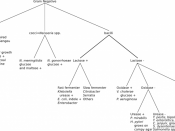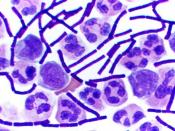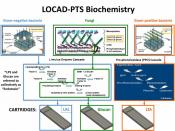Bacteria are an ancient and diverse form of life that have always been an integral part of the human body. The majority of bacteria are harmless, and some even helpful and necessary for the occurrence of specific bodily functions. However, some bacteria have proven to be harmful, and throughout the history of man our species has been plagued by bacterial infection. Pathogenic bacteria have many structural characteristics that allow them to survive and grow in a human host. At the same time, the human immune system must be capable of suppressing the growth of these foreign microorganisms in order to prevent the human body from becoming infected, and consequently has various methods for the destruction of harmful pathogens.
Bacteria in general have many different ways of affecting us, some positively, some negatively, others not at all. Pathogenic bacteria are the bacteria that affect us in a direct and negative way.
Bacteria are commonly divided into two distinct groups: Gram positive and Gram negative bacteria. The gram reaction of a bacterial species has to do with their cell wall structure. Other differences can be observed between the two divisions however. The cell wall of a bacterium is important when dealing with the virulence of the specific microbe. There are two possible types of cell wall that a bacterium may posses depending on its' Gram reaction.
Gram negative bacteria have two cell membranes sandwiching a thin layer of peptidoglycan, and lipopolysaccharides in the outer membrane. These lipopolysaccharides contain lipid A, an endotoxin capable of triggering symptoms from a human host. The Gram negative cell will not expel any of the endotoxins until lysis occurs. When the bacterial cell wall deteriorates the endotoxins are released into the human host and it is only at this point that disease can begin to occur.


